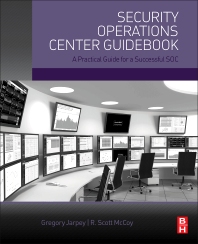Streamlining Operations and Investigations with Incident Management Tools

In the corporate world, there are usually two sides to an enterprise security program: security operations and investigations. They share a single goal – to make the business safer – but each are tasked with very different responsibilities in achieving that goal. Monitoring, data intake and initial response are the responsibilities of security operations, while the investigations side uses all the data and information that’s been gathered by operations for taking appropriate investigative actions and liaising with law enforcement.
A critical component of protecting businesses and other organizations against incidents and the losses they cause is security information management. As with any other business management function, security management demands data-driven decisions, not only in order to work but also to be viewed as credible within the organization.
Despite their differing functions, both security operations and investigations rely on data to make the decisions that will accomplish their tasks. In light of this, it’s easy to understand the need for a common, unified security solution that addresses both sets of needs. Robust incident management software is a mission essential and powerful tool for accomplishing the two sides’ common goal.
These software solutions, and the data collection and analysis they support, serve three primary purposes – risk management, performance management, and investigative intelligence – that unify and serve the individual needs of both operations and investigations from within a common system and user interface.
Risk Management
The first step of risk management for organizations is to be able to determine how much of the risk associated with a particular event or occurrence is acceptable (impact) and what, if any, action should be taken. Detailed information about what happens within and across an organization and how often (frequency) allows effective security safeguards to be deployed to help manage incidents and losses, while also providing a built-in defense against accusations of negligence or inadequate security.
Therefore, managing this ongoing incident activity is a necessity for all organizations. A harsh reality is that while organizations are flooded with data, they sometimes lack the necessary information on which to base decisions.
The most common challenge associated with risk management lies in gathering and extracting the right information from the vast amount of available data. This process is the weak link in most organizations’ security programs, mainly because of their failure to:
- Collect incident data consistently and accurately
- Store and proactively manage this data
- Secure data from unauthorized access and potential corruption
- Analyze the data to derive useful information about security issues and educate upper management about the variety and intensity of threats to their organization
- Act on information gleaned from analysis to reduce or prevent incidents and loss
Powerful and sophisticated incident reporting and investigation management software designed specifically for security can mitigate or eliminate these challenges. These solutions enable operations to gather security and risk-significant data in an orderly, convenient and accurate fashion. The data is then stored in a format that facilitates more efficient and effective analysis, which reduces the time and effort needed for successful investigations.
Performance Management
Using metrics and analysis in security management, organizations can take advantage of data to produce usable, objective information and insights to guide their decisions.
These insights and findings can support activities across the entire organization and help accomplish three main tasks that support an organization’s strategic goals:
- Improve decision-making
- Strengthen security operations
- Gain support for security and risk management operations
Within the security department, metrics and analysis provide CSOs with a better operational understanding of risks and losses, as well as the ability to monitor and discern trends and manage performance based on actual measurements. Offering both the standardization and consolidation of data, security-specific software solutions help automate the analytical process through trending, predictive analysis and customized statistical reports. Armed with this intelligence, the security department can report clearly and accurately to executive management to gain the necessary support for their security operations’ and investigations’ objectives, as well as their overall operational goals.
Intelligence and Investigations
When tackling the investigative process, security professionals are searching for proof that can serve as a foundation of facts upon which they can develop a conclusion. The process involves collecting a broad base of information on which they can base other assertions that are relevant to their investigation.
Problems arise when the data does not fit together to allow the development of an investigative narrative, picture or explanation. This forces security professionals to start over and rebuild queries to reassemble the necessary proof and locate any pieces that are missing from the narrative – a process known as a null-start.
Using a widely sourced database and appropriate software in a null-start, investigators can:
- Reduce guesswork by revealing complex associations hidden in the data
- Display routine data in visual formats that are easy to analyze and interpret
- Quickly navigate the data to identify additional relationships
- Process large volumes of data into actionable intelligence that brings clarity to complex investigations and scenarios
This information is also useful to security operations, who can more easily monitor and analyze data for trends that affect an organization’s security – and respond appropriately to mitigate or eliminate threats – before investigations become necessary.
In developing workplace intelligence and conducting investigations, security professionals on both the operations and investigations sides try to make informed decisions and take actions based on facts. Incident management and investigative software allows them to quickly and effectively track investigative data and analyze it to uncover meaningful patterns. For security operations, the end result is faster and more accurate data collection, monitoring and analysis, and investigators benefit from speedier and more accurate investigations – all of which put organizations in a better position to discover, prevent and solve security incidents and crimes.
Looking for a reprint of this article?
From high-res PDFs to custom plaques, order your copy today!








